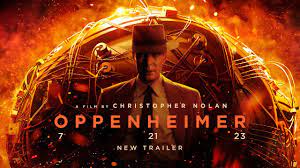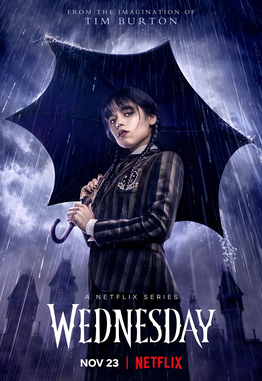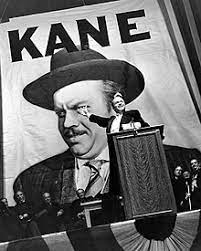Review: Lana Del Rey’s Honeymoon
October 28, 2015
The Record Review
Album: Honeymoon
Artist: Lana Del Rey
Genre: Baroque Pop/Dream Pop
Rating:★★★★
Best Tracks: “24,” “Salvatore,” “Freak,” “Art Deco,” “Terence Loves You,” God Knows I Tried,” and “Religion”
Worst Track: “Don’t Let Me Be Misunderstood”
If there was a world where old Hollywood icons thrived and obscure references to Lolita and Bruce Springsteen were staples in all music, Lana Del Rey would be its queen. Lana Del Rey has always been an artist with a very tumultuous relationship with critics and regular listeners alike. Even when she first stepped on the music scene there was a great deal of backlash on her authenticity, with frequent stabs at her singing ability. However, she was able to rise from her notoriety by releasing her critically acclaimed sophomore effort, Ultraviolence. On Honeymoon, Del Rey takes influences from jazz, trap, blues, baroque pop, electronic, hip-hop, and touches upon themes of nihilism, fame, and love. There has been so much hype behind this album from the mysterious Instagram posts and the “Honeymoon Hotline,” which allowed fans to hold conversations with an automated Lana while listening to snippets of the album. After thoroughly listening through the album, it is safe to say that this is Del Rey’s most enthralling and progressive album yet.
The album starts off with the slow title track, “Honeymoon.” The songstress does not promise anything new on the track, articulating the simple story of a sour relationship as she croons on the track “Mr. Born to Lose.” However, the highlights of the song are the simplistic lyrics and the stellar production by Rick Nowles that gives the track an opulent, yet ethereal orchestral flourish. After a somber start, the album flows into the low-tempo visual oriented song “Music to Watch Boys To.” The instrumental stays at its peak with the alluring and smoky Egyptian woodwind melody that floats in the track. When Del Rey hisses the bridge it provides so much imagery and context for her views on love.The way her emotionless-layered voice blends into the instrumental piece highlights how she finds no deep connection with love, but rather a superficial nihilistic view.
“Terence Loves You” starts with a guitar-driven instrumental with Del Rey’s melodic voice guiding the cinematic atmosphere. This track is raw heartbreak that showcases Del Rey’s ability to provide almost authentic lounge jazz. This song also pays homage to David Bowie, making a reference to “Space Oddity” in the bridge when she calls out, “Ground control to major.” “God Knows I Tried” is another guitar led track that gives insight into the ways Del Rey copes with her fame. This song conveys so much emotion and has rhythms of blues that she aspires to master. The icy violins and the other organic instruments blend with her voice to show she is one with her music.
“Art Deco” is the jazz-tinged, syrupy slow ballad that has a rattling trap beat in the background, and smooth jazz riffs that echo throughout the song. The song tackles the hollowness of notoriety and the void that is created when your untapped talent is overlooked, and for that reason it is one of my personal favorites. The interlude “Burnt Norton” has Del Rey reciting a portion of the first poem from T. S. Eliot’s “Four Quartets,” as the words are recited over a flowing new wave beat. The poems further support Lana’s nihilistic views on reality by inferring that all time is present in one another and that human choice is an illusion.
“The Blackest Day” and “24″ serve as exemplars of melodramatic songwriting and cinematic instrumentals.With its echoing, deep voices, and with the lurking guitar that plummets and rises into a heartbreaking crescendo during the chorus, “The Blackest Day” fully conveys the whirlwind of emotions that come with a breakup. For good measure, Del Rey even calls upon Billie Holiday to add that extra sadcore touch. “24″ is the Bond song that never was, the lavish instrumental provides menacing high-octane atmosphere, and the lyrics paint the archetypal idea of James Bond ever so well. “Swan Song” has such a great concept in theory by revitalizing the Greek metaphor, but the overly simplistic lyrics fall flat against the orchestration´s overbearing flourish. “Don’t Let Me Be Misunderstood” is the only glaring mistake on this album. It’s not a terrible track, but knowing the history of this iconic Nina Simone song I can’t bare to sit through it. When you cover a Nina Simone track you have to be able to fight and match up to the eccentric vocal delivery, grit and emotion that her voice had; in this track, it seems like Del Rey lost the fight without even trying.
As an overall album, Lana Del Rey’s efforts on Honeymoon are her best in storytelling, vocals, and instrumentals. However, this album does have flaws, most of the songs can drag on, and even though the trap influenced songs are some of the best, the clean synths don’t mix well with the reverb-saturated atmosphere of the album. Despite these shortcomings, I’m in love with this album, and I would recommend it to anyone who needs an eye-opener on quality pop music, and modern chamber pop. Honeymoon has a timelessness to it that I can see lasting throughout the decades. Lana Del Rey has made her own lane in the pop universe where she is able to experiment and be a non-conventional eccentric pop star that even monumental pop idols like Taylor Swift try to emulate.












